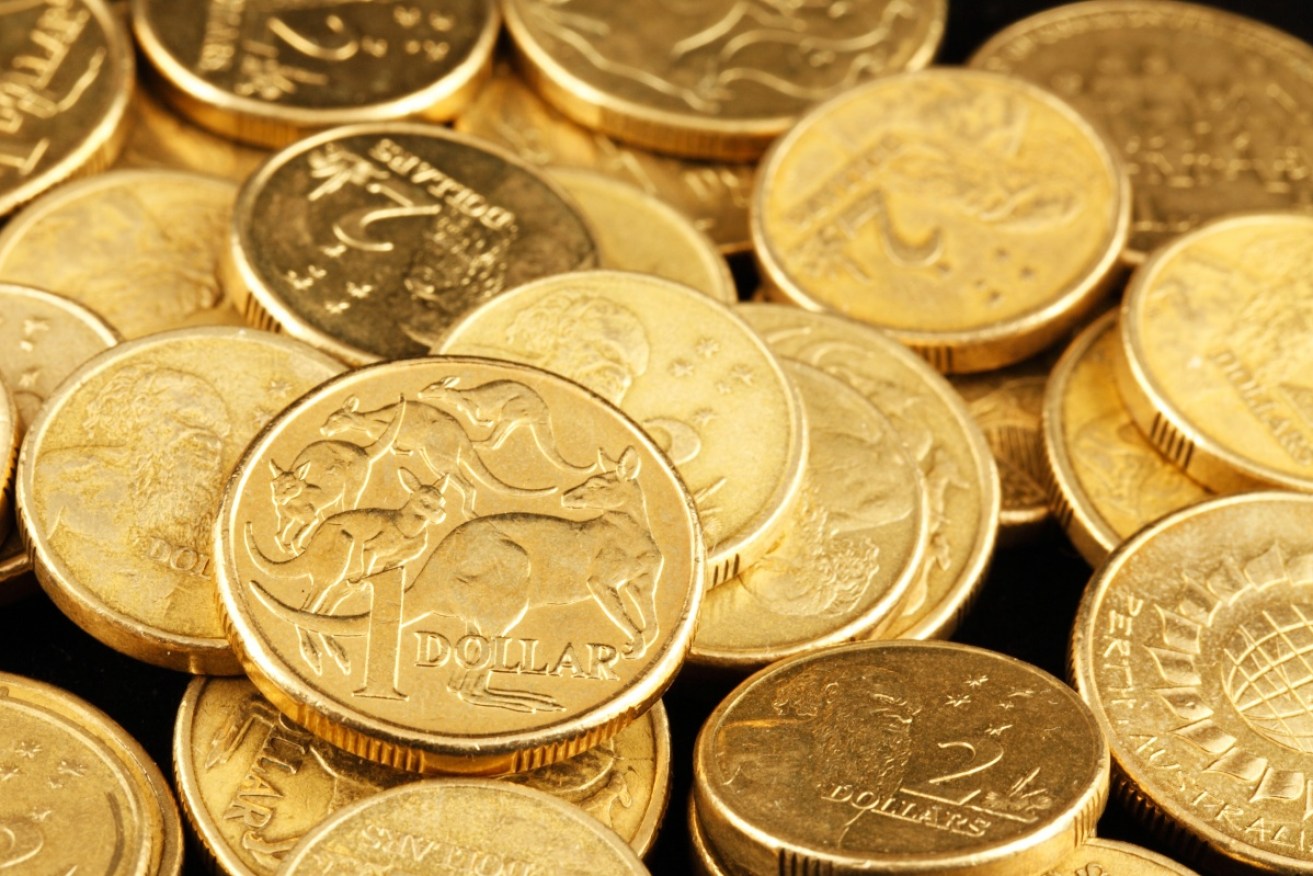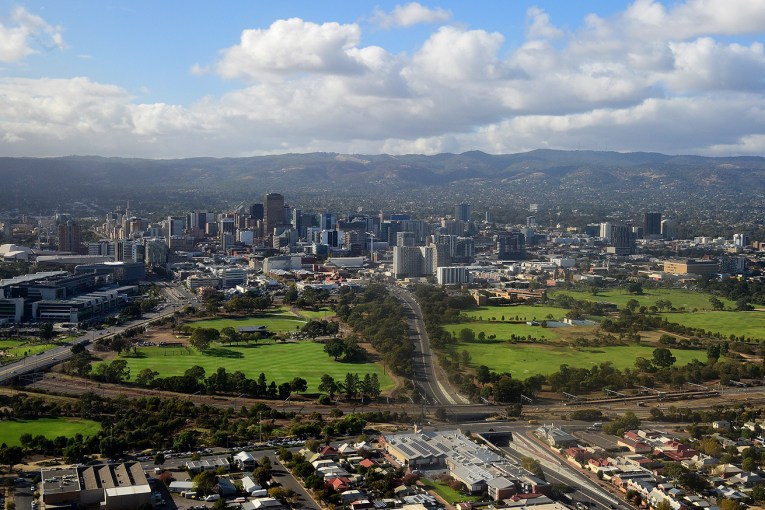The gunpowder, battles and traps of RBA’s rate decision

Oil prices have helped the dollar break 77 cents. Photo: Getty
Tuesday’s cash rate decision, Glenn Stevens’ last in the role of Governor, might seem boring, but it hints at bursting bubbles, debt traps, currency wars, stockpiles of gunpowder and more.
The Reserve Bank, tasked by Parliament with setting Australia’s monetary policy, left the official rate at 1.5 per cent at its September board meeting on Tuesday.

Plenty of drama in Mr Stevens’ final statement, if you dig a little. Photo: Getty
The official cash rate is the rate the RBA charges on overnight loans to the banks. It is often called the interest rate because changes to it flow on to many crucial financial products, including home loans, savings accounts and term deposits.
In his final statement as Governor, Mr Stevens justified the hold by saying it would be “consistent with sustainable growth in the economy and achieving the inflation target over time”.
This was a nod to the three aims that, by law, the RBA must work towards: a stable currency, full employment, and economic prosperity.
That word, prosperity, should get you very interested in the juicy details of Tuesday’s decision.
Reminder of subdued economy
Mr Stevens’ statement painted a sobering, but familiar, picture of the economy.

Business investment fell off a cliff after the GFC, as the chart below illustrates. Photo: Getty
He described inflation as “quite low”, labour market indicators as “somewhat mixed”, business investment as suffering “a very large decline”, and global economic growth as “lower than average”.
A clearer picture will emerge on Wednesday when the Bureau of Statistics releases GDP growth figures for April-June.
But at least one economist is warning we shouldn’t be distracted by this short-term figure. Instead, we should be wary of “more problems ahead”.
BIS Shrapnel chief economist Richard Robinson forecast this week that annual GDP growth, currently at 3.10 per cent, will slow to 2.8 per cent in 2016-17, 2.6 per cent in 2017-18, and 2.1 per cent in 2018-19, driven by a drop-off in residential building, business investment and exports.
But there was some good economic news. ABS data released on Tuesday showed public sector spending rose 4.5 per cent in real terms in April-June, which should bolster Wednesday’s GDP figure. But trade worsened slightly, which the ABS said would detract 0.2 percentage points from GDP growth.
Keep the powder dry

The RBA’s barrels are still smoking from its 25 basis point cut in August. Photo: Getty
Because of these warnings of stagnation, many experts believe the RBA needs plenty of cards up its sleeve – in the form of cash rate basis points – to use if things get worse.
BIS Shrapnel’s Mr Robinson characterised the September rate hold as “a bit of a ceasefire” for this reason: “I’m hoping they’ll keep their powder dry because I actually think they’re really going to need this, maybe not this financial year but next financial year, to cut rates.”
The RBA governor’s statement showed no explicit bias towards cutting rates further in coming months, but some are predicting just that.
Mr Robinson flagged two more rate cuts by 2017-18. JP Morgan chief economist Sally Auld predicted a further 50 basis points of easing even sooner, in 2016-17.
Debt temptation
The RBA noted that house prices had risen moderately and home loan growth had slowed, while a considerable supply of apartments was due to hit the markets in eastern capital cities in the next couple of years.

Beware mortgage stress. Photo: Getty
This was probably meant to allay fears that cheap credit will create a property bubble that will eventually burst.
But there is another risk. Not only are record low rates fuelling a growth in house prices, but they are a temptation to overextend.
Dr Stephen Koukoulas, a former economic advisor to Julia Gillard, warned borrowers to factor in the prospect of interest rates 1 or 2 per cent higher than today.
“If you’re gearing up too much now, it might be at the wrong time of the cycle, not just because asset prices – houses – are really expensive. There’s no question about that,” Dr Koukoulas said.
“It’s also because that over the course of the 25-year mortgage, which is how long most people have their mortgages for, you could be pretty confident that at some stage over that time, maybe within three to five years, interest rates will be higher than they are today. They just have to be.”
Losing the war?
Mr Stevens also gave a nod to “the lower exchange rate since 2013”. He warned “an appreciating exchange could complicate” the transition of the economy away from the dying commodities boom.
This confirms that the central bank, as part of its ‘currency stability’ mandate, keeps an eye on the value of the Australian dollar, which was buying about 0.76 US cents on Tuesday, compared to only 0.67 cents in January.

The ‘currency war’ theory says central banks are competitively devaluing their currencies. Photo: Getty
While this is nowhere near the AUD peak of $US1.10 in 2011, it does have some economists worried, as a stronger dollar hurts exports.
The ‘currency war’ theory says central banks around the world are slashing rates with the aim of devaluing their currencies in order to claw back economic growth. BIS Shrapnel’s Mr Robinson holds this view.
“It looks like it’s a battle between all the monetary authorities around the world not to have the strongest currency. Everybody wants to push their rates down just to make sure their currency remains a bit low so they’re competitive.”
If the RBA’s August cut is seen through this light, then you could argue it was a failure. The AUD didn’t budge.
Dr Timo Henckel, an economist who chairs the so-called RBA shadow board, said the term “currency war” is a little too colourful and aggressive for his liking, but confirmed it’s true the RBA is watching the currency market.
“The exchange rate channel is one way in which monetary policy affects the economy. It’s one of the transmission channels, basically, of monetary policy. But it’s not the only one.”









